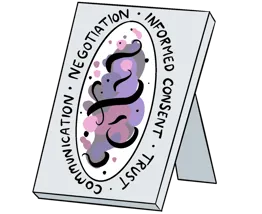Enrol in an online course today for flexible, self-paced learning—no fixed schedule required. Plus, enjoy lifetime access to course materials for convenient revisiting.
Complex Traumatisation: An Integrative Mind-Body Approach

Traumatic events are not simply remembered, they are relived as if they are still occurring. While clients might experience vivid images, nightmares, or flashbacks, these symptoms are usually accompanied by strong emotions and disturbing sensations. In some cases, clients might report feeling flooded, frozen, hopeless, or helpless without fully understanding the cause of their symptoms.
What is complex PTSD?
Complex PTSD (C-PTSD) occurs as a result of repeated or chronic exposure to extremely threatening events from which escape is impossible. C-PTSD is associated with a longer duration and greater intensity of traumatic stress. Chronic traumatisation often leads to profound dysregulation of the autonomic nervous system (ANS), which regulates bodily functions, such as our heart rate, blood pressure, body temperature, and breathing without conscious awareness. The ANS either mobilises energy through our sympathetic nervous system (SNS) or conserves energy through our parasympathetic nervous system (PNS). Complex trauma is associated with imbalances in both PNS and SNS states, resulting in associated patterns of dysregulated affect and physiology. When the nervous system is sufficiently imbalanced, it is often difficult to find nourishing relaxation or restful sleep, yet equally challenging to feel emotions of joy, pleasure, and excitement.
Hypervigilence or emotional numbness?
Some individuals have predominant SNS activation, resulting in a state of hyper-arousal that manifests as heightened reactivity, anxiety, emotional outbursts, and rage. These individuals might have an enhanced startle effect or feel hypervigilant, as though they must remain on guard. They may be highly sensitive to people’s body language, facial expressions, and tone of voice. In contrast, other individuals present with an imbalance in the PNS, which promotes a state of hypo-arousal associated with helplessness, hopelessness, despair, and depression. These clients present as emotionally numb and suffer from an inability to feel pleasure and positive emotions. There is a greater likelihood for dissociative symptoms in which they feel disconnected from their body, like their body doesn’t feel real, or that the world around them feels surreal. In contrast to individuals who are hypervigilant, clients with dissociative symptoms can be prone to under-responding or feeling immobilised in risky situations. As a result, they may not take actions to protect themselves which can lead to re-traumatisation.
A mind-body approach
An integrative approach to working with clients with C-PTSD relies upon the foundation of a strong, trustworthy therapeutic relationship while understanding that our clients’ symptoms are best understood within socio-developmental and cultural contexts. From here, we can explore a bidirectional relationship between the mind and body in trauma treatment.
Traditionally, psychotherapy focuses on the role of the mind as influencing physical wellbeing; however, a mind-body approach to trauma recovery is now recognised as essential to successful treatment. We simply cannot think our way out of our innate, physiological stress and trauma responses. In other words, we engage clients in somatic awareness which balances the top-down approach of talk therapy with bottom-up interventions that focus on sensations and emotions in order to create greater stabilisation or access the way that trauma is held in the body. We do so by applying the science of polyvagal theory into psychotherapy. For example, through small experiments, you can invite clients to explore how subtle changes in posture, breath, movement, and somatic awareness can help them develop a felt sense of trust, connection, safety, and stabilisation. Furthermore, an integrative approach brings in mindful awareness of parts or ‘ego states’ to address dissociative symptoms.
Protective behaviours
It is common for individuals with complex trauma to have been in therapy for many years. They may feel cautious about therapy because of historical experiences where they have been misunderstood, misdiagnosed, or blamed for their symptoms. They may come to therapy reluctantly, with well-constructed defenses and somatic tension that serve as armour to protect them from underlying terror, helplessness, and shame. Some tread water in a sea of chronic overwhelm. They may struggle to sleep at night due to their heightened sensitivity to perceived threats and reliance on primitive survival instincts to defend themselves. Others have had to disconnect from their body and emotions altogether.

For most, these protective behaviors have been necessary for their survival, and they will not surrender these sources of protection easily. When treating individuals with C-PTSD, we must be open to flexibly adapt our therapeutic approach to focus on the needs of each specific client. It is our job to earn their trust, which is a task that can be challenging, especially if they have experienced betrayal in previous relationships. However, if we do our jobs well, we might be given a sacred task: to bear witness to their suffering and attend compassionately to their wounds.
You can learn with Dr Arielle Schwartz at three PESI UK events this Autumn:
· Treating Complex Trauma: A Comprehensive Approach to Accurately Assess and Effectively Treat Clients with Chronic, Repeated and/or Developmental Trauma, live video webinar, Thursday 19-Saturday 21 November 2020.
· Embodied Practices for Treating Trauma and Finding Inner Calm, live webinar presentation as part of PESI UK’s Women, Trauma and Mental Health Master Series Conference (Thursday 5- Friday 6 November 2020).
· The psychological and physiological repercussions of complex trauma: essential information, a free clinical conversation, Thursday 29 October.
The Post-Traumatic Growth Guidebook, by Dr Arielle Schwartz, is published by PESI.


















